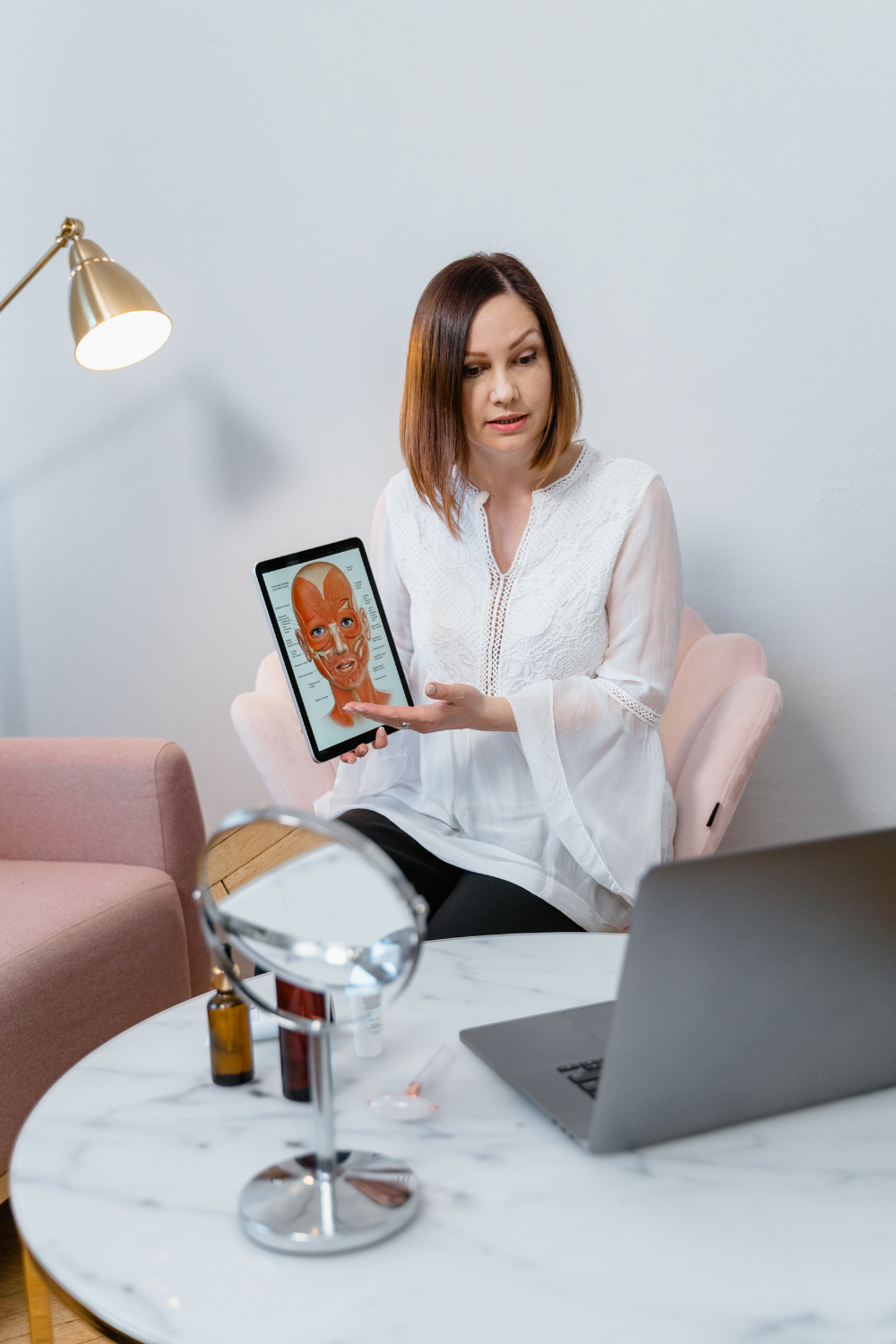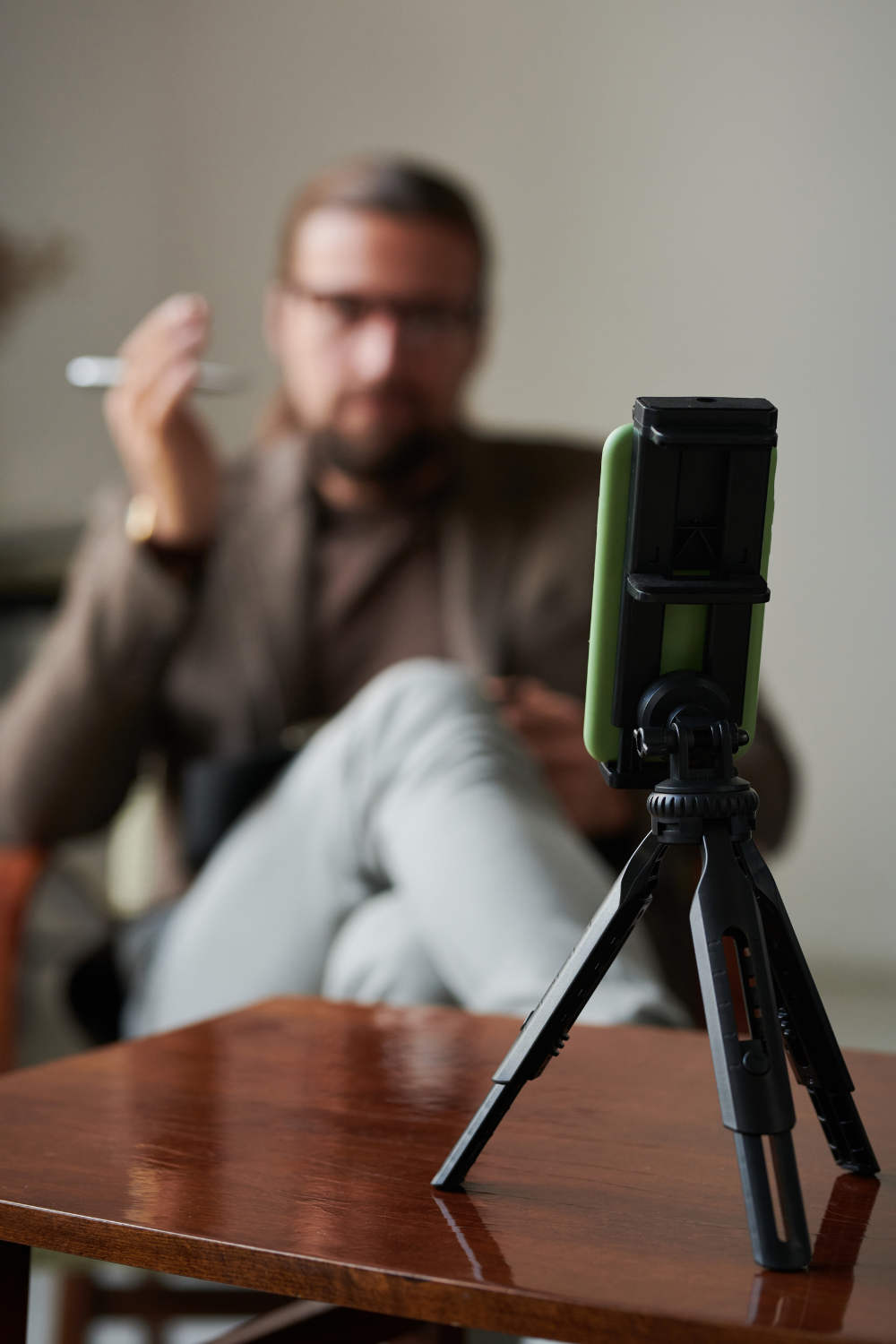40 Therapist headshots and photoshoot ideas
Building a personal brand as a therapist can be overwhelming, especially when you’re not sure how to visually represent your practice. Let’s dive into how you can plan an aesthetic personal branding photoshoot that will elevate your private practice.
In case we haven’t met yet, I’m Natalia Maganda, a website designer for therapists specializing in helping ambitious life coaches and mental health professionals like you amplify their magic, gain visibility, and simplify their marketing efforts through strategic web design and content.
As a mental health professional, you might feel overwhelmed, confused, and even embarrassed when it comes to building your personal brand
As a mental health professional, you wear many hats. You’re dedicated to helping your clients navigate their personal challenges, but when it comes to your own branding, things can get tricky. You might feel overwhelmed by the idea of presenting yourself visually. Questions about what kind of image you want to project, how to look professional yet approachable, and how to capture the essence of your therapeutic approach can leave you feeling confused and stuck.
On top of that, imposter syndrome often creeps in, making you question if you’re really ready to showcase yourself and your practice to the world. This sense of self-doubt can be paralyzing, making the task of planning a photoshoot seem daunting. But you’re not alone in this. Many therapists face similar struggles when it comes to creating a strong visual presence that feels authentic and professional. The good news is that with a bit of planning and the right approach, you can overcome these challenges and create a visual brand that truly represents who you are and the incredible work you do.
By the end of this guide, you’ll know exactly how to plan an aesthetic personal branding photoshoot for your private practice.
You’ll have a clear idea of the types of photos you need, how to prepare for your shoot, and how to use these images to enhance your therapist website and overall branding.
Creating a personal branding photoshoot is not just about taking nice pictures. It’s about capturing the essence of who you are as a therapist and conveying that through your photos.
Your images should tell a story that resonates with your clients and reflects the warmth and professionalism of your practice. Here’s how you can prepare for a successful photoshoot that will provide you with a variety of images to use across your website, social media, and other marketing materials.
Do therapists need a brand photoshoot?
Absolutely! In today’s digital age, having a strong online presence is crucial for therapists and life coaches. A professional brand photoshoot is not just about having high-quality images; it’s about creating a visual representation of your practice that resonates with your target audience. Here’s why a brand photoshoot is essential:
First impressions matter
Your website and social media profiles are often the first point of contact potential clients have with your practice. High-quality images create a positive first impression and convey professionalism and trustworthiness.
A professional photoshoot builds credibility and trust
Professional photos can help establish you as a credible expert in your field. They reflect your commitment to your practice and your clients, helping to build trust and confidence.
Your photos are a fun way to showcase your personality
A well-planned photoshoot allows you to showcase your personality and the unique aspects of your practice. This can help potential clients feel a personal connection before they even meet you.
Brand recognition across your marketing efforts
Consistent and professional images across your website, social media, and marketing materials create a cohesive brand identity. This makes it easier for clients to recognize and remember you.
Engaging visuals humanize your brand
Engaging visuals can increase interaction with your content, whether it’s on your website, social media, or promotional materials. This can lead to higher engagement rates and more inquiries.
How to plan your therapist branding photoshoot
1. Understand your brand
Before diving into the logistics of your photoshoot, take time to define your brand. Consider the following:
- Values and Mission: What values do you want to communicate through your photos? Are you focusing on compassion, professionalism, or a specific therapeutic approach?
- Target Audience: Who are your ideal clients? What kind of imagery will resonate with them and make them feel comfortable reaching out?
- Visual Style: What style aligns with your brand? Do you prefer a formal, modern, or cozy aesthetic?
Understanding these elements will guide your decisions about the style and tone of your photoshoot.
2. Find inspiration
Create a mood board to visualize the style you want. Gather images from Pinterest, magazines, and other sources that reflect your brand’s aesthetic. This will help you articulate your vision to your photographer and ensure that the photoshoot aligns with your brand identity.
3. Select a photographer
Choosing the right photographer is crucial. Look for someone who has experience with branding photoshoots, particularly for therapists or similar professionals. Review their portfolio and ask for recommendations to find someone who understands your vision and can capture it effectively.
4. Plan your outfits and props
Your outfits should reflect your brand’s colors and style. Choose clothes that make you feel confident and comfortable. Consider using props relevant to your practice, such as:
- Therapy Tools: Books, notebooks, or therapeutic tools that represent your approach.
- Comfort Items: Items that make your space inviting, like fresh flowers or cozy blankets.
I can assist you with style consultations to ensure that your outfits and props are aligned with your brand.
5. Prepare your environment
Whether shooting in your office, a studio, or an outdoor location, ensure the environment reflects your brand. Clean and style the space to match your desired aesthetic. Small touches, like organized bookshelves or calming decor, can enhance the final images.
Therapist photoshoot ideas
Headshots
- Classic Headshot: A clean, professional image with a neutral background.
- Warm and Inviting: A headshot with a soft, welcoming smile and cozy attire.
- Action Shot: A candid photo of you in a natural, engaging pose.
- Studio Setting: A polished headshot with studio lighting and a professional backdrop.
- Outdoor Setting: A natural, relaxed headshot taken in a serene outdoor environment.
- Office Setting: A headshot in your therapy space to convey your work environment.
- Casual Attire: A more relaxed headshot in casual, yet professional attire.
- Formal Attire: A polished and sophisticated headshot with formal clothing.
- Close-Up: A close-up of your face to capture your expression and personality.
- Black and White: A timeless black-and-white headshot for a classic look.
Lounge
- Comfortable Seating : Relaxed poses in a cozy lounge area.
- Informal Setting : Casual, yet professional images in a lounge space.
- Reading Area : Poses with books or magazines in a reading nook.
- Casual Conversation : Poses that mimic a friendly conversation.
- Relaxed Attire : Comfortable clothing in a relaxed lounge environment.
- Calming Decor : Incorporating calming decor elements like plants or soft lighting.
- Group Setting : If you have a team, casual group photos in a lounge area.
- Personal Touches : Incorporate personal items like framed photos or artwork.
- Comfort Items : Poses with items that add warmth, such as a blanket or tea.
- Natural Light : Utilizing natural light for a warm and inviting atmosphere.
Office Pictures
- Desk Setup : Images of your desk with your tools and materials.
- Therapy Space : Pictures of your therapy space, showcasing comfort and professionalism.
- Book Collection : Highlighting your book collection or resources.
- Calm Environment : Images of a serene and organized office environment.
- Client Interaction : Candid shots of client interaction (with permission).
- Workspace Details : Close-ups of office details like decorative elements or tools.
- Inviting Decor : Showcasing elements that make your office inviting.
- Professional Setup : Images of your professional setup, including technology and materials.
- Office View : Pictures capturing any views or special features of your office.
- Workspace Personalization : Personal touches that reflect your personality and practice.
Lifestyle Shots
- Working from Home : Images of you working in a home office setting.
- Outdoor Work : Poses in an outdoor setting, reflecting a balanced work-life approach.
- Casual Activities : Photos of you engaging in casual, everyday activities.
- Community Involvement : Images of you participating in community or professional events.
- Relaxation Time : Poses that showcase your relaxation and self-care routines.
- On-the-Go : Shots that depict a dynamic lifestyle, such as traveling or attending events.
- Family or Friends : Images with family or friends to highlight your personal life.
- Creative Hobbies : Photos of you engaging in creative or relaxing hobbies.
- Public Speaking : Images of you speaking or presenting at events.
- Daily Routine : Candid shots of your daily routines and activities.
A well-planned photoshoot can significantly enhance your personal brand and make your therapy practice stand out.
Ready to elevate your online presence? Explore my web design services for therapists and download my free website planner guide to get started. Let’s work together to build a website that attracts and converts your ideal clients, showcasing your unique approach and passion for helping others.
Related reads:
- The ultimate guide to branding your therapy and private practice
- 10 simple ways to get more therapy clients for your private practice
20 modern therapist logo ideas - The best examples of modern therapist websites

* AI Disclosure: This content may contain sections generated with AI with the purpose of providing you with condensed helpful and relevant content, however all personal opinions are 100% human made as well as the blog post structure, outline and key takeaways.
* Affiliate Disclosure: Some of the links on www.nataliamaganda.com may contain affiliate links meaning that I will get a commission for recommending products at no extra cost to you.

hello! i'm natalia
Latina, web design expert for mental health professionals.
I help ambitious life coaches, therapists and holistic leaders amplify their magic, gain visibility, and simplify their marketing efforts through strategic web design and content.


















































